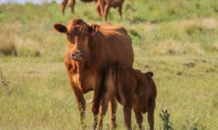As reported in High Plains Journal. Producers and landowners have opportunities to protect their land and enhance its value through multiple programs available from several federal agencies. Generally, the stated purposes of these programs are to “help producers and landowners make conservation improvements, build resiliency, and reduce climate change impacts.”
The implementation of these programs can protect land values and may also add value to the land at the same time. While the individual programs are too numerous to mention in an article, the major federal agencies that have programs available to benefit producers and landowners include the U.S. Department of Agriculture-Natural Resources Conservation Service; USDA-Farm Service Agency; USDA-Rural Development; USDA-Risk Management Agency, U.S. Forest Service; U.S. Fish and Wildlife Service; Environmental Protection Agency; and the Small Business Administration. The programs discussed in this article are more focused on programs that can directly improve the land, protect and enhance its value.
Most producers are familiar with NRCS and FSA programs. NRCS recently released information about the key programs that are available during the 2022 federal fiscal year, which began Oct. 1. Those programs include the Environmental Quality Incentives Program, Conservation Stewardship Program and the Agricultural Conservation Easement Program. The NRCS accepts applications year-round, but the advises producers to contact their local office because states do set deadlines. Applications received after those dates are considered in the following year.
These programs are delivered on a “cost share” basis, meaning the producer and NRCS each pay a percentage of the cost of the conservation practice. Conservation districts work together with NRCS and identify local resource concerns and establish priorities for needed conservation practices at the county level. This is called “locally led,” meaning that local landowners and producers have a voice in the process. Producers express their opinions by completing surveys and attending the locally led meetings. NRCS considers these local priorities in the process of approving applications for cost share assistance.
There are over 170 practices that are eligible for cost share assistance through EQIP. The CSP payments support producers who are making comprehensive efforts to improve their entire farm or ranch by utilizing advanced conservation practices. Producers can apply to enroll wetlands, farmland, and grassland into easements for long-term protection under the ACEP. An additional program under the ACEP is the Wetland Reserve Enhancement Partnership. NRCS engages other partners to leverage resources to protect and restore high priority wetlands and improve wildlife habitat. A Wetland Reserve Easement is part of this program. Information about NRCS programs can be found at https://www.nrcs.usda.gov/.
FSA programs are designed to provide financial resources to producers for a variety of purposes. FSA administers farm loan, commodity, conservation, and disaster assistance programs. FSA programs are made relevant at the local level through use of an elected FSA County Committee. FSA administers the Conservation Reserve Program. This is a program provides income to the producers for removing land from production and putting it back into grassland. The FSA cost shares the expense of the practices needed to establish grass and provides an annual per acre payment for the agreed period, ranging from 10 to 15 years. Establishing grass on marginal lands can reduce erosion and improve wildlife habitat.




